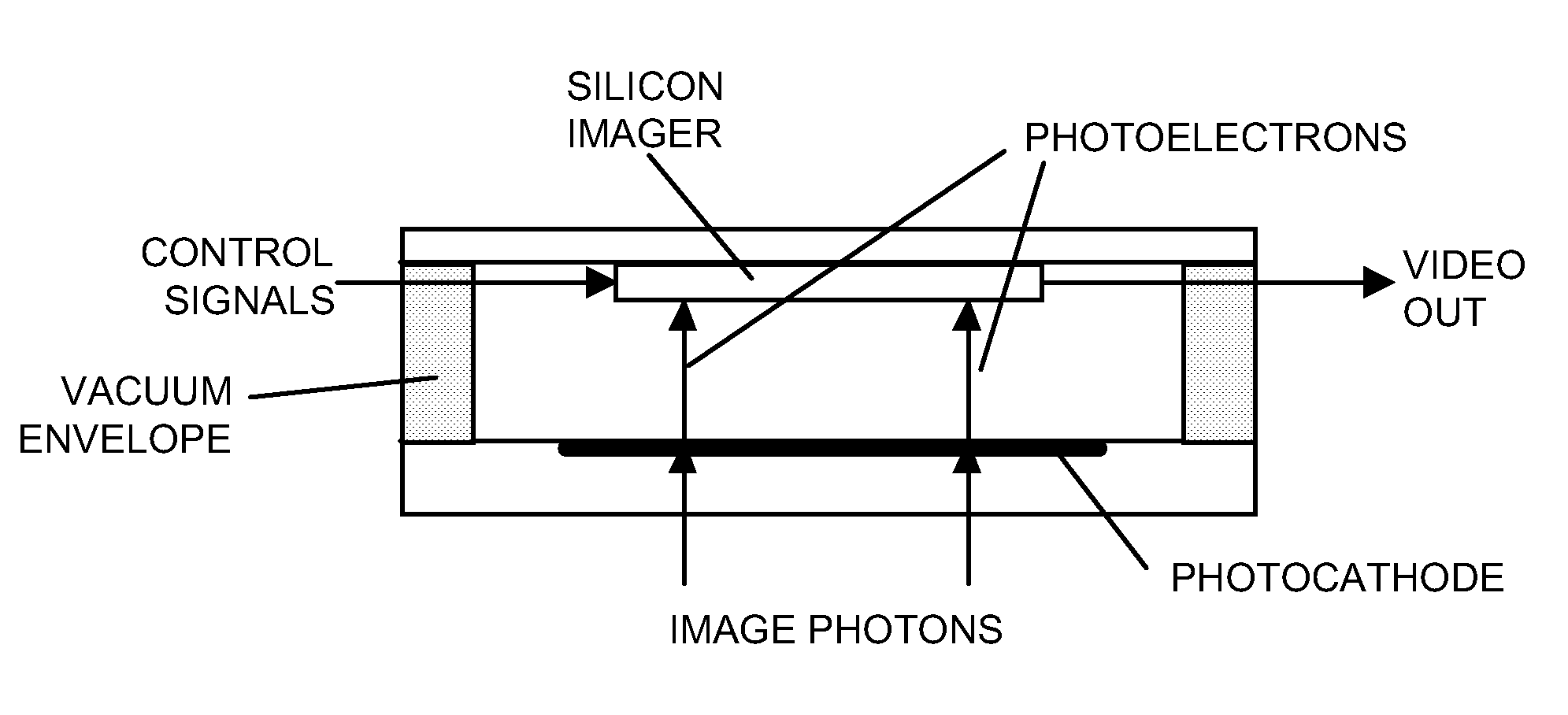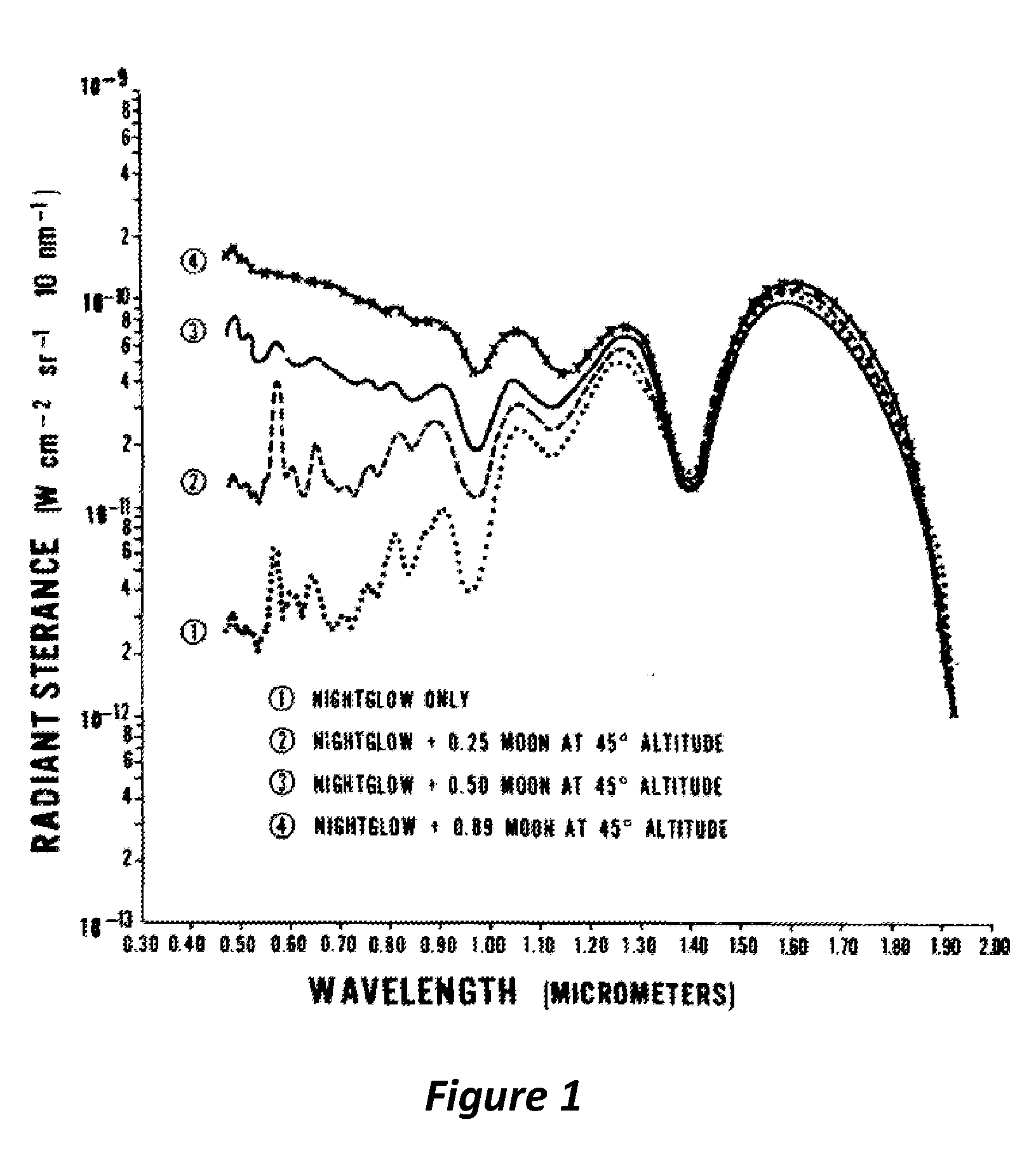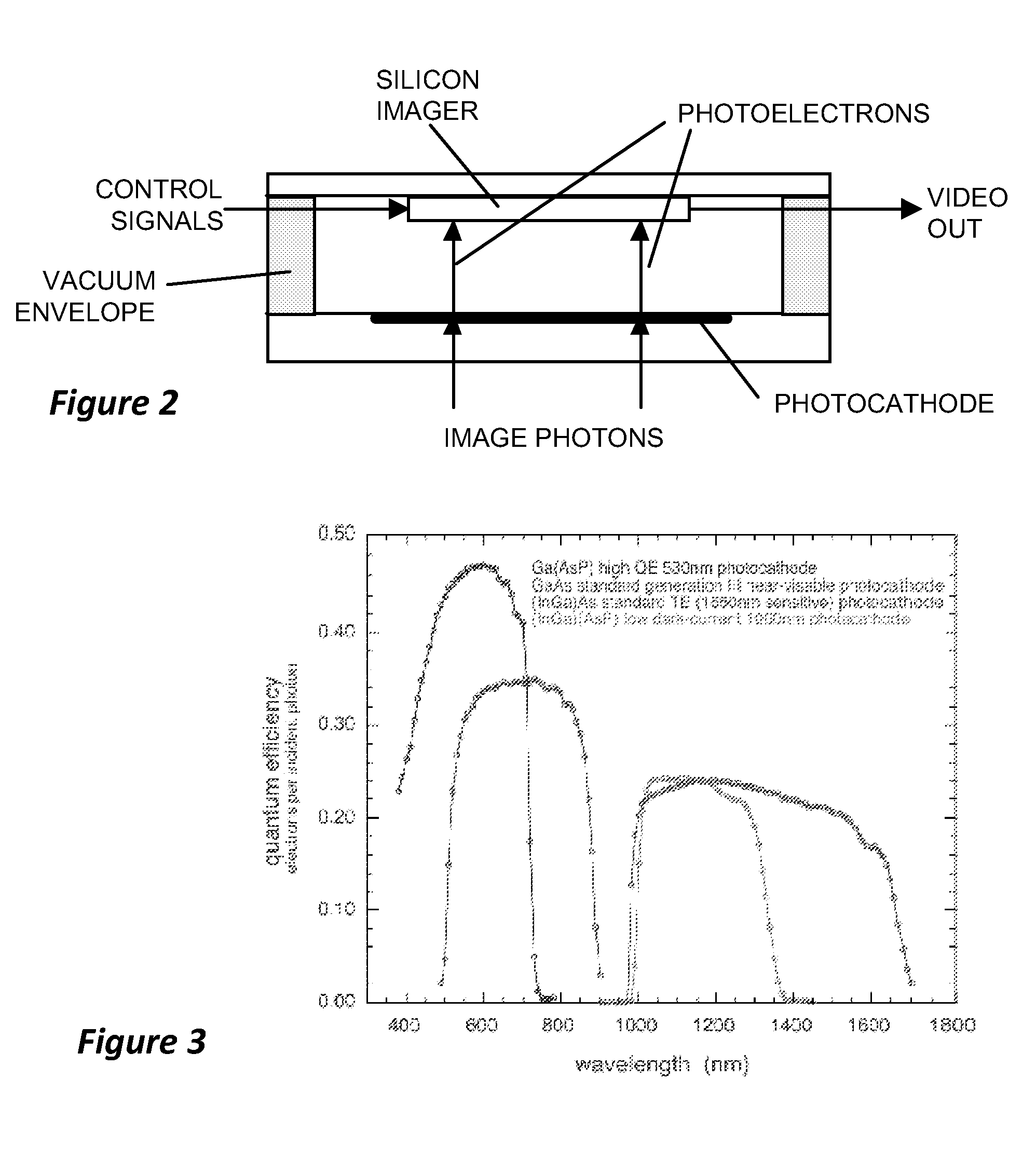Low energy portable low-light camera with wavelength cutoff
a low-energy, portable technology, applied in the direction of solid-state devices, instruments, material analysis, etc., can solve the problems of limited performance of night vision devices, limited semiconductor materials, and low amount of light available on moonless nights, so as to maximize the detection of moonless night sky illumination, minimize dark current, and optimize spectral response
- Summary
- Abstract
- Description
- Claims
- Application Information
AI Technical Summary
Benefits of technology
Problems solved by technology
Method used
Image
Examples
Embodiment Construction
[0037]FIG. 1 shows the spectral intensity of the night sky illumination as a function of wavelength. This data is disclosed by Vatsia, Mirshri, L. “Atmospheric Optical Environment”, Research and Development Technical Report ECOM-7023, September (1972). Curve 1 on this graph plots the illumination level versus wavelength on a moonless night. This represents the darkest, most challenging, condition for operation of a night vision device. It can be observed that there is a large reduction in the available light at night in the 1.4 to 1.5 μm wavelength range. This reduction is caused by absorption of optical radiation in this band by water in the atmosphere. On the other hand, there is a second “maxima” beyond 1.4 μm, centered at about 1.63 μm. Therefore, artisans in the art have sought to develop sensors that have long wavelength cutoff beyond 1.7 μm, so as to capture this second maxima. Conversely, embodiments of this invention restrict the long wavelength cutoff of the semiconductor ...
PUM
 Login to View More
Login to View More Abstract
Description
Claims
Application Information
 Login to View More
Login to View More - R&D
- Intellectual Property
- Life Sciences
- Materials
- Tech Scout
- Unparalleled Data Quality
- Higher Quality Content
- 60% Fewer Hallucinations
Browse by: Latest US Patents, China's latest patents, Technical Efficacy Thesaurus, Application Domain, Technology Topic, Popular Technical Reports.
© 2025 PatSnap. All rights reserved.Legal|Privacy policy|Modern Slavery Act Transparency Statement|Sitemap|About US| Contact US: help@patsnap.com



